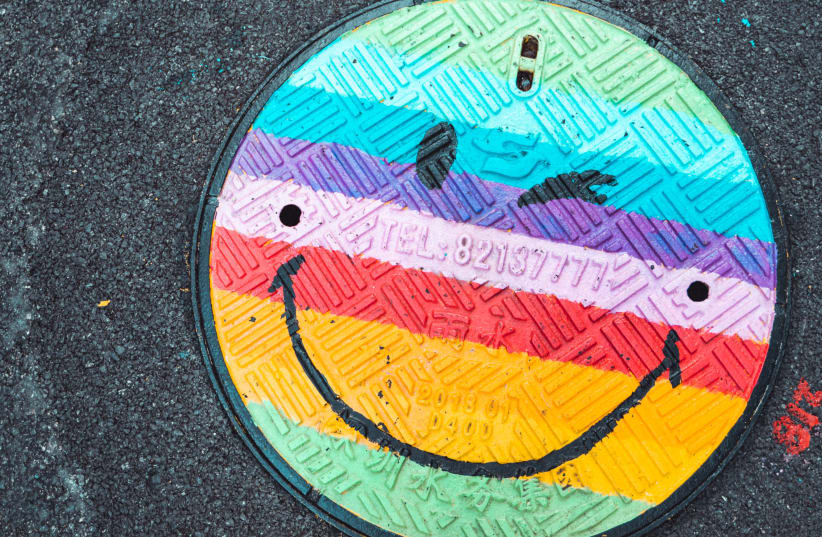Can happiness be legislated?
We are now smack-dab in the middle of the Adars, volume I and volume II of this unusual final month that occurs seven times during each 19-year cycle, what we call the Jewish leap year.
Adar is considered the most joyous month in the Hebrew calendar; its motto is, “When Adar comes, happiness abounds.” Perhaps this is because it concludes our biblical year, and so we can bless the fact that we have survived to celebrate yet another birthday.
Or perhaps it is because Adar contains within it the festival of Purim, the most raucous of all our holidays, characterized by masquerade parties, over-the-top banquets and even semi-obligatory inebriation. Mordecai’s exuberant proclamation at the close of Megillat Esther, “For the Jews there was light and gladness, joy and honor,” best sums up Purim’s celebratory mood.
BUT CAN we be commanded to be happy? Is happiness a state of mind that is divinely imposed upon us – with or without our consent – or is there some secret to attaining this gift of joy?
The answer – in typical Jewish fashion – is yes, both are true. Simha is bestowed to us as a spiritual imperative, but it is also something we earn due to our own efforts.
The rabbis wisely include joy as a necessary component of Jewish life. They understand that Jewish life may never be a stress-free or danger-free nirvana; there will always be some dark cloud that threatens to envelop us, some disaster – or presumed disaster – just around the corner. And so they insist that at least some of our days be tinged with positivity and optimism.
They therefore declare that every Shabbat should include the component of oneg Shabbat, the joy of Shabbat; and every festival must contain the element of simhat yom tov.
This may be achieved in numerous ways: Food, of course, is central, and so meals on these days should create the mood and ambience of a special occasion. Wine should flow, at least three meals must be served (many add a fourth on Saturday night, the melaveh malka), and the quality of the menu should clearly outshine that of the weekdays.
Indeed, many people would save their pennies to buy delicacies like fish or beef reserved only for Shabbat and hag, and even to this day there are many observant Jews who will not eat meat meals after Wednesday, so as to build anticipation for the holy day.
Clothes also set the mood, and we save our “Sunday best” for Shabbat and hag. This is particularly essential for our wives and our daughters – who certainly look better dressed up than we men do! – and so the holidays of Passover, Shavuot, Rosh Hashanah and Sukkot customarily include purchasing new clothes for the ladies, upon which they can pronounce the sheheheyanu blessing. Children are not left out, either; special candies and treats should also uplift their spirits.
All these various things serve to fulfill the biblical imperative “v’samahta b’hagecha,” you must rejoice in your holidays. The underlying idea is that people cannot fully connect to God while in a state of sadness or vexation; unless we are at peace with ourselves and reasonably satisfied with our lot in life, we cannot fully commune with our Creator, and be whole.
The Talmud says that the Shechina – God’s presence on earth – can rest only upon one who is filled with simha. That is why the prophets would calm themselves and meditate, often to the sound of soothing music, in order to “get in the mood” before attempting to receive a Divine message. In fact, the rabbis advised that one should avoid praying while in sorrow or anger, for those emotions run counter to our belief that all things emanate from God, ultimately for the good.
There is also a concept of simha shel mitzvah, the joy that derives from aligning with God’s will and following His path. This sensation can be felt when we study the Torah and marvel at its ultimate wisdom; or when we fulfill a commandment, such as observing Shabbat or participating in a Passover Seder, when we feel as if we are rising above our mortal selves and partnering with the Almighty.
It can even transcend anxious moments and turn pain into pleasure, as when we experience joy at a brit milah, even as our baby’s blood flows; at a child’s wedding, even when we know that our children are leaving home to start their own journeys; and at the conclusion of Yom Kippur prayers, when our exhilaration overwhelms our hunger and we sense our blessed release from our transgressions.
And so Rabbi Nahman of Breslov famously declared, ”Mitzvah gedola lih’yot b’simha tamid,” it is a great mitzvah to always be happy, with some reversing the sentence to read, “It is a great joy to always be involved in mitzvot.”
Maimonides wrote, in fact, that it is a sin not to be happy, quoting the verse in Deuteronomy 28 that tragedy and curses came upon the Jewish people “because you did not serve God with joy, when your lives were abundant.”
Perhaps the greatest expression of this mitzvah-simha duality comes when we share our joy with others, for when we bring happiness to someone else, we are truly godlike, emulating the God who bestows gifts on his creations in a thousand different ways.
Indeed, the rabbis rule that while there are several mitzvot that are commanded on Purim, such as hearing the Book of Esther read or participating in a feast, the most important one of all is matanot l’evyonim, the giving of gifts to the poor. Rabbi Lord Jonathan Sacks writes that “simha and sharing are inextricably connected”; Rabbi Nahman likens the act of giving to a host at a wedding who pulls a hesitant outsider into the circle of dancing, giving him a feeling of honor that lifts his spirits and raises his self-esteem.
In these semiannual leap years, we are blessed with a double dose of opportunity, 60 days rather than the usual 30, to surround ourselves with an extra measure of joy, to refrain from thinking only about the troubles in Eastern Europe, the COVID crisis or the rising cost of commodities.
For at least some of these twin months of Adar, don’t worry – be happy! ■
The writer is director of the Jewish Outreach Center of Ra’anana. jocmtv@netvision.net.il

